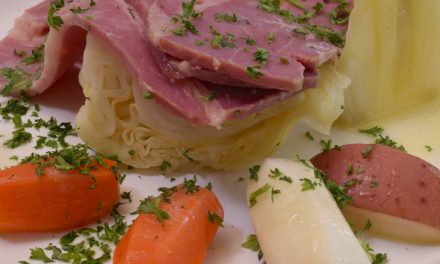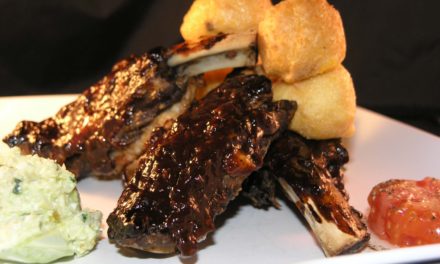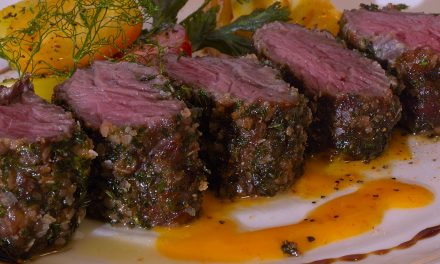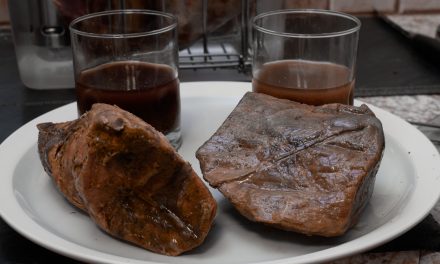Here it is, with Music
No fancy allegory this time ’round, I know everybody just wants to see how SV Prime Rib is done, or, at least how Norm does it. The fact is, Norm doesn’t always do it the same. Norm doesn’t always do ANYTHING the same, unless he’s working for somebody who requires it. Prime Rib itself is a misnomer, but who cares right now?
I pre-seared this time, but, other than that, this is my basic approach.
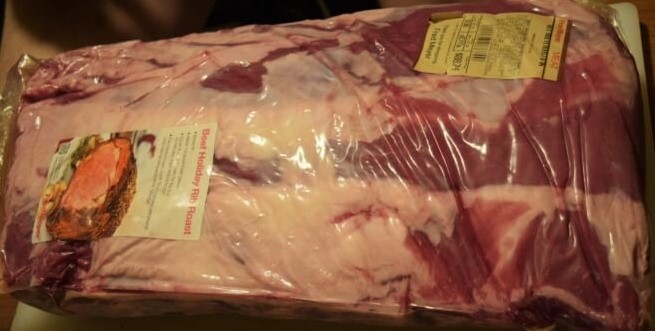
Fools buy according to price alone. But SV forgives many sins, and Prime grade is not necessarily the best choice, no pun intended. Some companies that make ovens dedicated to prime rib recommend using select grade beef, because of the tenderizing action of low temps.
Ribbing allowed, limited time only.
That being said, I found Select bone-in Ribeye for $5.77/lb, which is a good price anytime. Usually, Select is not really much lower in price than Choice, because of market forces, and is completely wholesome. Confirmation, the actual “shape” of the animal, plays as much of a role in grading as anything else. This time of year Choice goes as high as $11/lb, because they know you want it. At $5.77/lb., this one cost about 90 bucks, and you can easily feed 12 MEN, so that’s really less than $8 each.
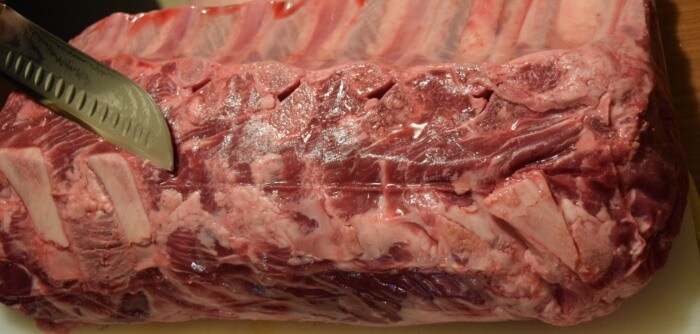
- There’s usually a few feather bones still stuck on there, we’ll remove them now so we don’t hit them later with our slicer.
- Proud to use the Lipavi VG10 knife for this project.
- I don’t work for Lipavi. Yet.
- That might be awesome.
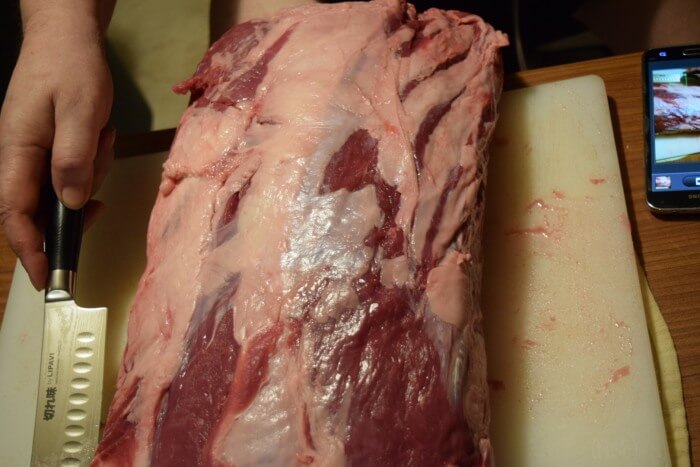
- I remove the rib bones for SV Prime Rib, and there’s a couple of good reasons.
- Convenience alone is as good a reason as any, but bones also like to poke the bag, they have a different density than the meat, they are more susceptible to autolysis, so on, so forth.
Pickles just don’t get sharp. You’ll need a knife for sure.
- This method is safe, AS LONG AS YOU KEEP YOUR OTHER HAND ON TOP OF THE RIBEYE while you run the knife along the bones by feel.
- If you feel more comfortable flipping it over to remove the bones, go ahead, but I find that even more awkward.
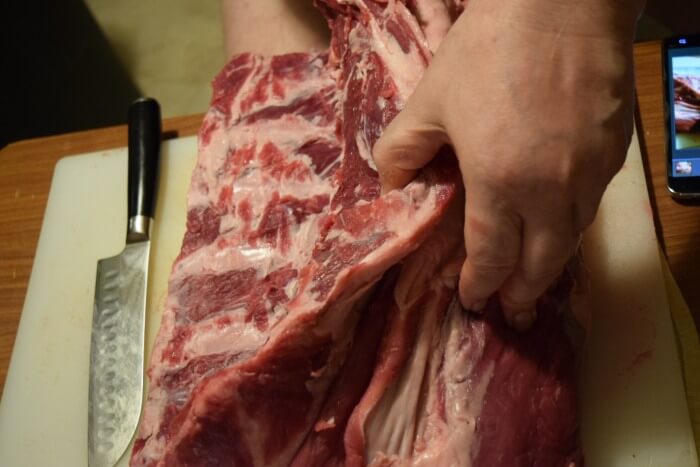
- Pull it back as you cut along the bone, but remember that the meat is soft enough, if you pull it too hard, it will actually start to tear apart.
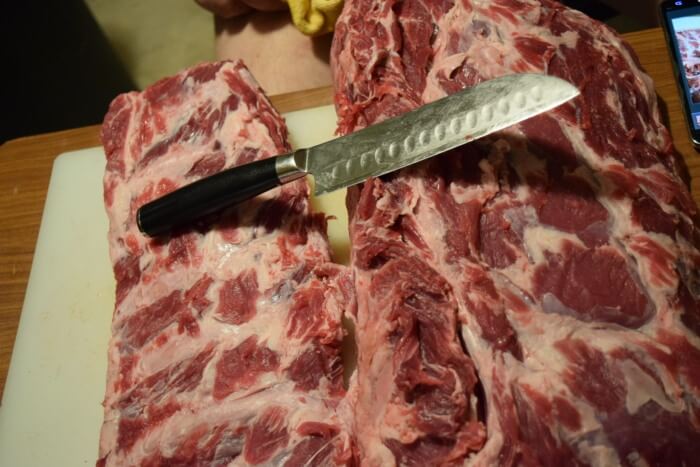
- You want the bones fully exposed, but, even if they aren’t, that just means you are gonna have some meaty BBQ bones later.
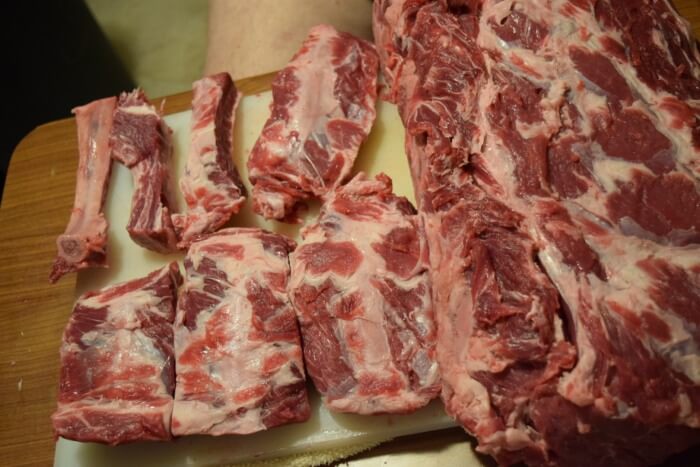
- This is a big deal for me, but I always had to point it out to cooks and colleagues.
- Cut the bones so that 3 have NO meat on them, and four have meat on both sides.
- The naked bones are roasted to make au jus, the meaty bones are SV processed to blow people’s minds.
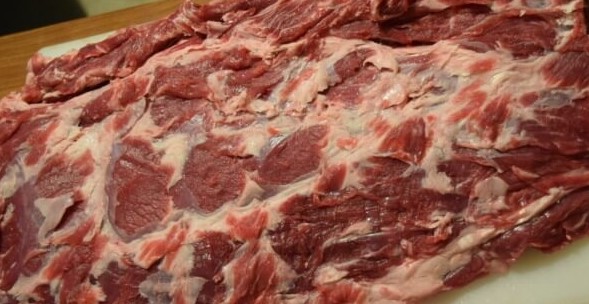
-
Reserve the rib bones for now, we’re gonna do this thing.
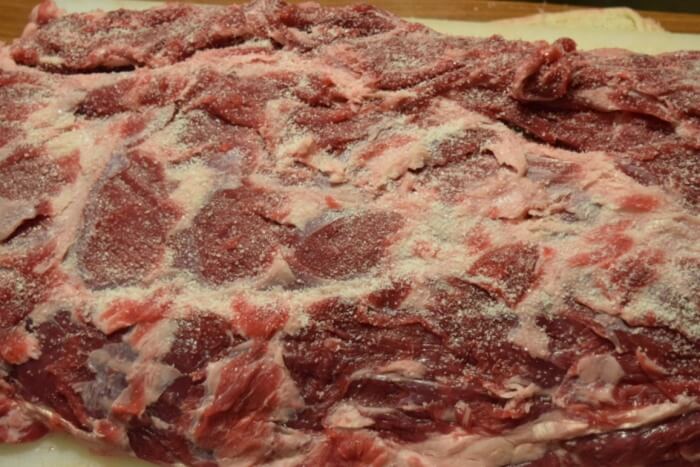
- This looks heavily salted, but it’s really not.
- Kosher salt is large, but a little lighter than regular salt.
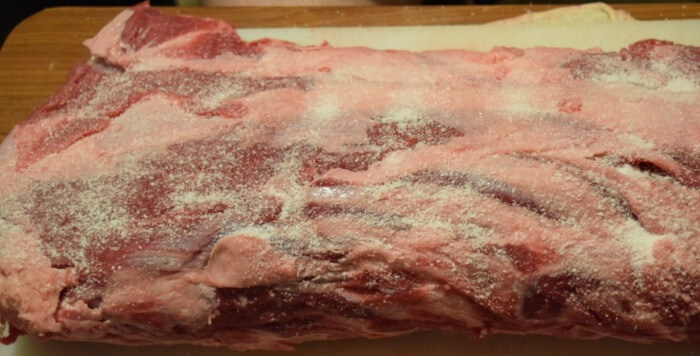
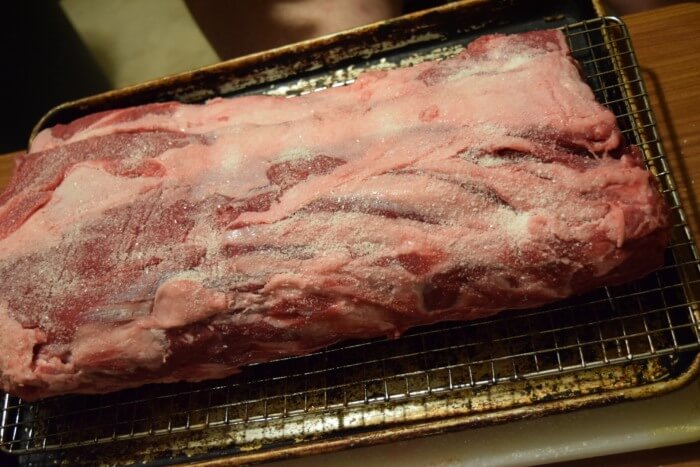
- On to a screen, if possible, and there’s a reason, but not an essential one.
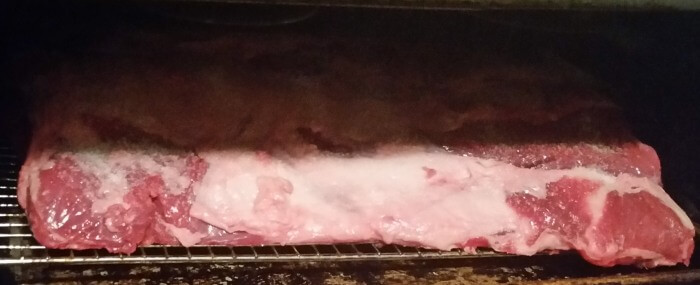
And, Now, for a Brief Discussion Period.
I always worked in restaurant kitchens, which is pretty irrelevant for most readers. My experience in the industry led me to eventually notice a few things about ovens designed for the home. Most of them, gas and electric, have some form of broiler function.
The electric ones usually have the element in the top of the oven, which almost makes up for all the other deficiencies of electric stoves. Chefs like gas, but the home stoves usually have the broiler in the bottom of the oven, underneath the gas element, and that is a real pain, and even a little dangerous.
Beyond that, even the full blown broiler function is thermostat guided, so it goes off by itself after a certain, unknown temp is achieved. Probably 450F, thereabouts. This is to prevent us from forgetting what we’re doing, going down for a nap, and burning down the neighborhood. So, I also noticed that if I left the oven door of my electric stove cracked open, the element never went off, because the thermostat never hit that magic number.
This makes for great results, and a smokin’ hot kitchen. Oh, well, everything has its price.

- In the poor bullock goes, and I have no intention of flipping. After all, the side with the bones is never seared, right?
- Honestly, searing is sort of like smoke rings in BBQ, just a little over played.
- Nobody ever came to me and said “Chef, make sure the Prime Rib has a full Maillard treatment on the surface, or there will be Hell to pay.”
- It was more like “If that bad boy isn’t MR, you’ll be looking for a job next week.”
Set the phasers on stun.
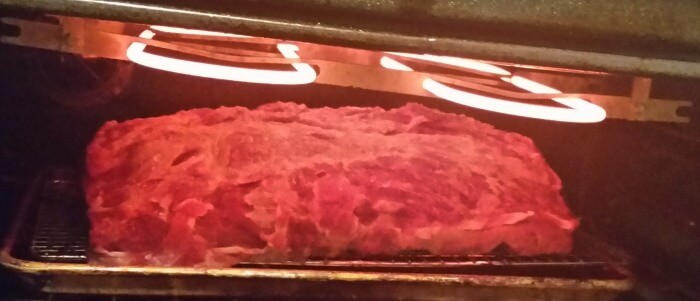
- They tell you not to preheat the broiler function, either, for the same thermostatic reason.
- I obeyed.
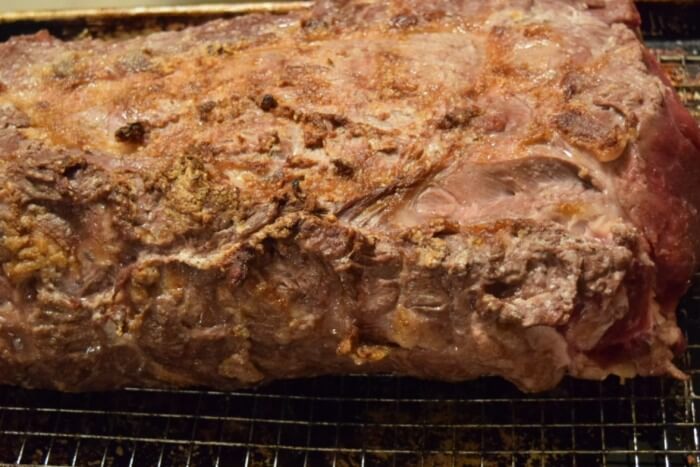
- We got some decent color on there, and, of course, even I wonder just how far that heat is penetrating. Even though I know better.
- That’s how clinical anxiety is. You worry about the stupidest stuff.

- Obviously, we had nothing to worry about.
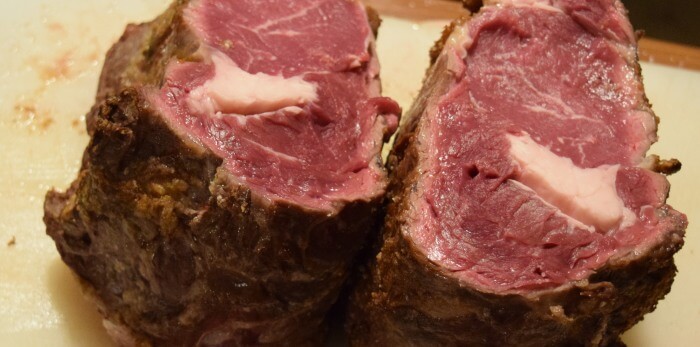
- Barely even penetrated. Anxiety and haste are the banes of the cook.
- Even though there’s only 2 chunks in the pic, the roast was cut into 3 pieces. That puts them about 4lbs. each.
- A Ziploc Gallon bag will be perfectly suited.
- Depending on shape, I try to limit batches to 5 lbs. or less.
- This is not only a volume issue, but a weight issue and a cooling issue.
- And not only for the bag, but, heck, for me.
I like Devices
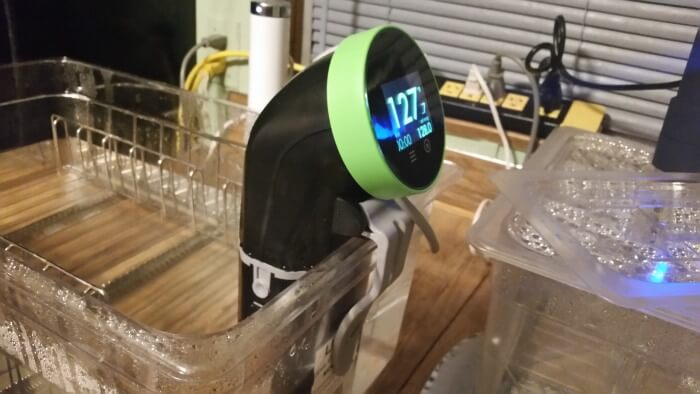
- We’ll use the Nomiku today, you can see the Joule in the background.
- Okay, where’s my cell phone?
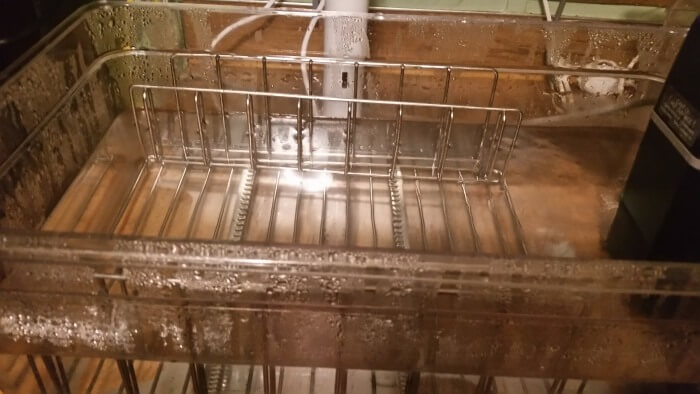
- Pictured is the Lipavi L20
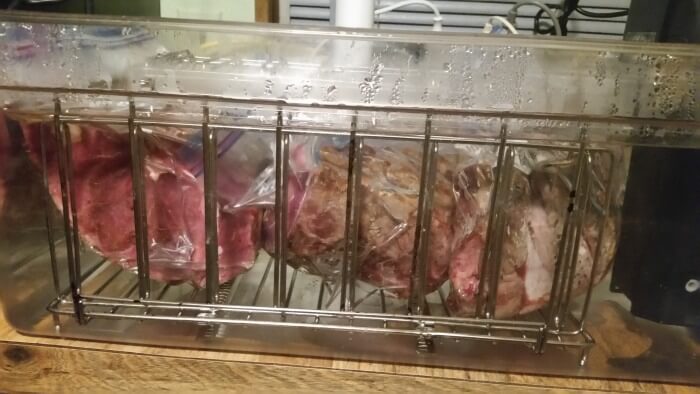
- I like things easy.
- I put the meat in the Ziploc Gallons, and immerse in cold water to remove all the air.
- I try to position them in the tank so the opening is near the top.
- As the heat penetrates the package, whatever air is in there will expand, so I crack the seal at a corner and let some air burp out.
129Fx8 or so…up to 24
- If the water is 129F, it’s not so hot as to burn you, if you are relaxed and deft.
- Otherwise, you can use gloves.
- or just blow it off.
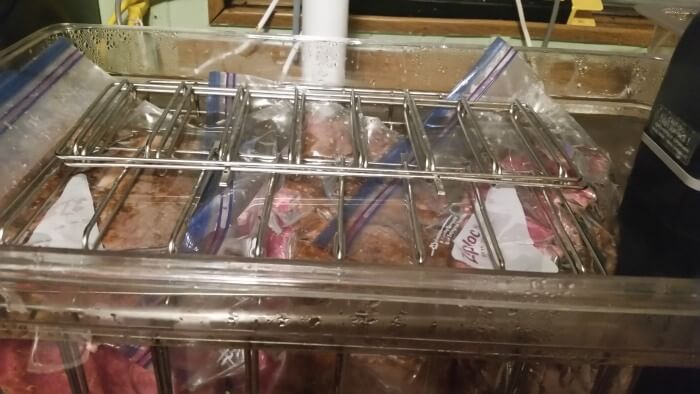
DIVE! BATTEN DOWN THE HATCHES!
- At such low temperatures, you definitely want everything fully submerged. The unattached Lipavi racks are great for this.
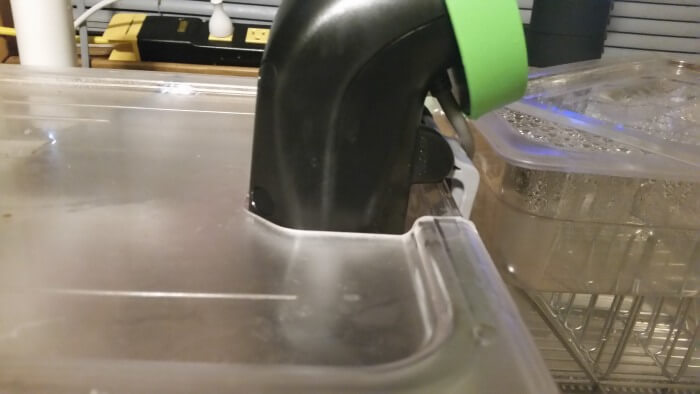
- Lovin’ that tight fit.
- As part of the Beta testing I’m doing, I ran the Nomiku for three days straight @140, in the large Lipavi tank.
- I never did have to add water. In fact, without actually measuring, it really didn’t even look like it went down.
- It just looks like it’s raining in there all the time.
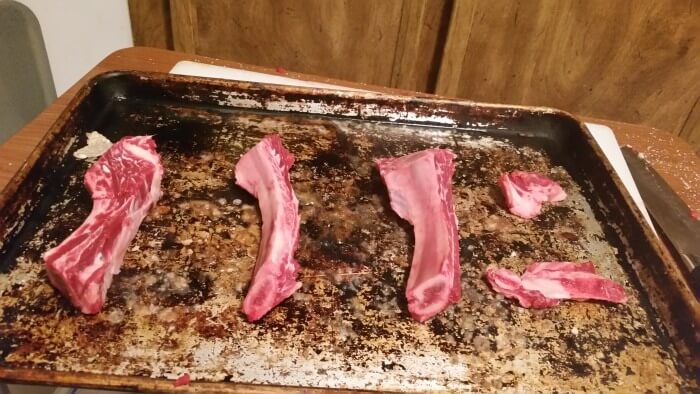
- Okay, back to the au Jus.
- On the pan that you had the prime rib screened above, there will be a little bit of fat and juice, so why waste it?
- Don’t be alarmed, aluminum pans build up that stuff on them after a while, it doesn’t come off without a fight.
- Roast @350F until they get brown. I dunno, maybe an hour? Brown is the standard, not time.
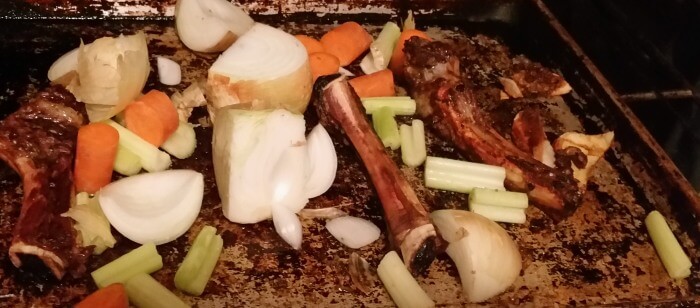
- Once you add “some” celery, onions, and carrots, the bones really stop browning, so, again, relax.
- Wait. Feel the love.
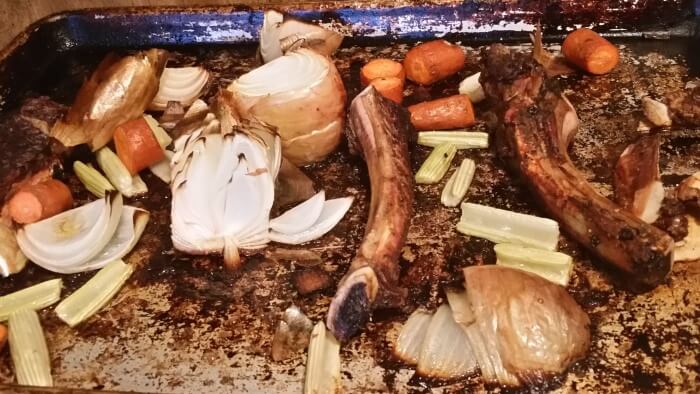
- Let them get brown.
- I dunno, another hour, I suppose? Brown.
First desert, then flood, then drain.
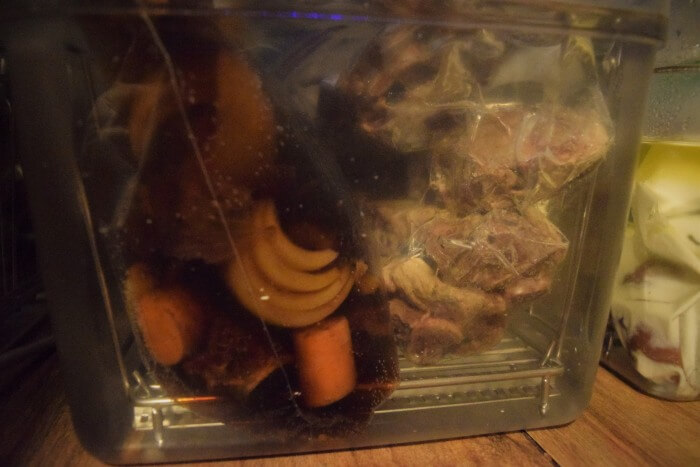
- So, I’ve got the au Jus in a Ziploc Gallon, and the meaty bones in another bag, so I started @183F to denature the stock components completely.
- Then, I reduced to 165F until dinner, and, then to 150F to keep steeping the bones.
- What is it they say?
- “No rules. Just right”?
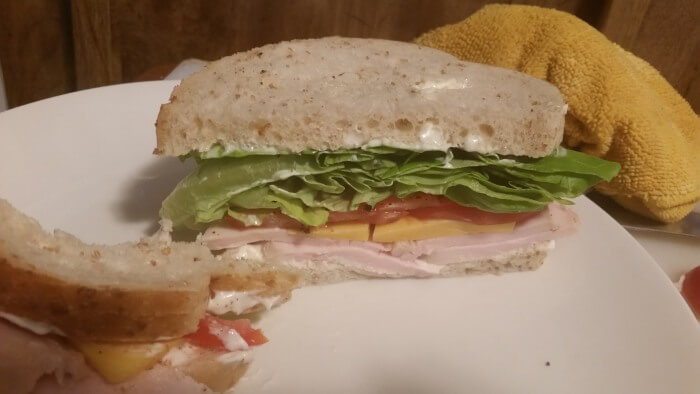
- By now, I was about ready to pass out, so I ate what cooks eat.
- SV turkey breast, what a luxury, lots of mayo, butter lettuce, smelly cheddar, hot house tomatoes, sloppy, right there.
- In the old days I would have had a Lucky burning and a Henry Weinhardt’s or something else that wasn’t selling very well in the bar.
- Good times.
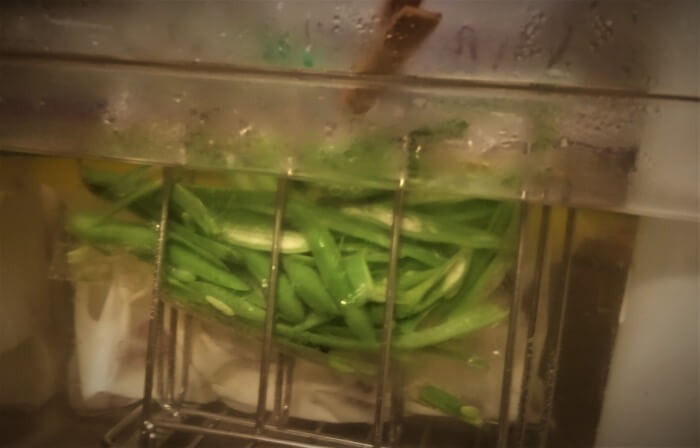
- I kina like the old fashioned French Cut green beans, not to be confused with French Cut fingernails, although I like them too.
- Sans Vide, 5 minutes or something, it’s pretty forgiving, and they won’t turn black because the gas can escape.
- Cutting the beans is an issue.
- I’m not gonna buy a dedicated device to cut green beans.
- The mandolin kind of works, for the first half of the bean.
- The mechanical slicer, same thing, green bean slivers flyin’ all over the place.
- Doing them by hand works if you got a sharp knife, but if you have French Cut nails, there will be clippings in the beans.
- Or blood.
Just be careful.
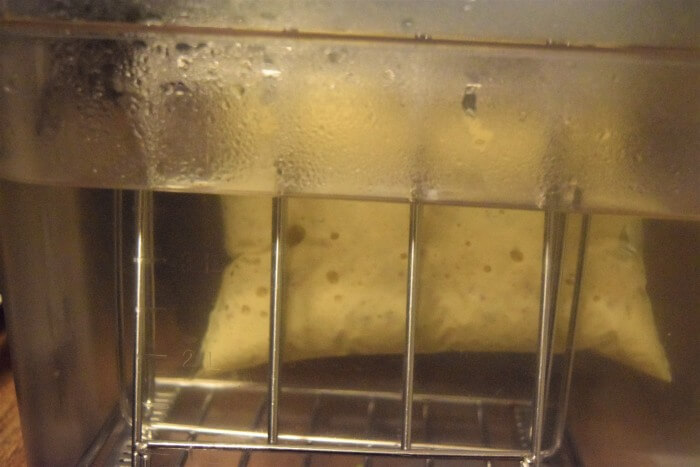
- Mashed potatoes, as per our recipe, except with red potatoes.
- Because the Russets were still in the trunk of the Dodge, and the red potatoes were right here on the rack.
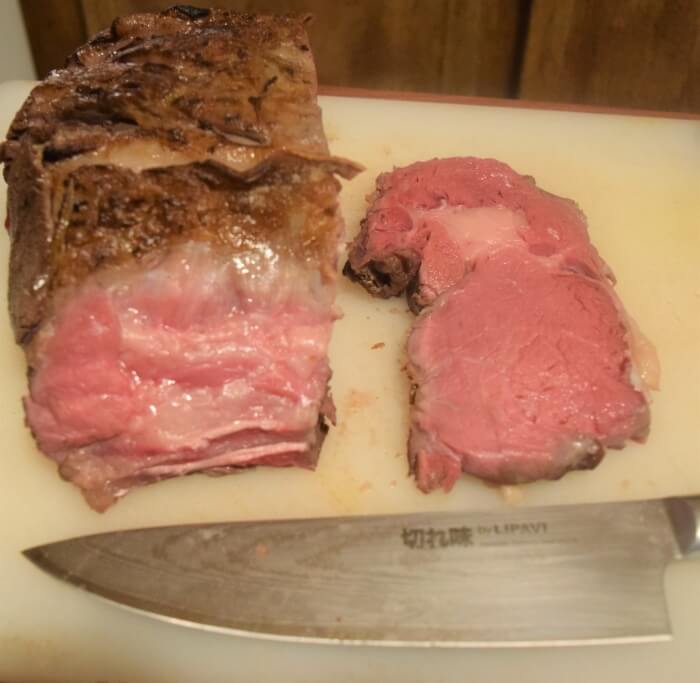
- First slice.
- Raw pic, I mean unedited,
- Rare all the way through, that’s Sous Vide.
- No bleed through time.
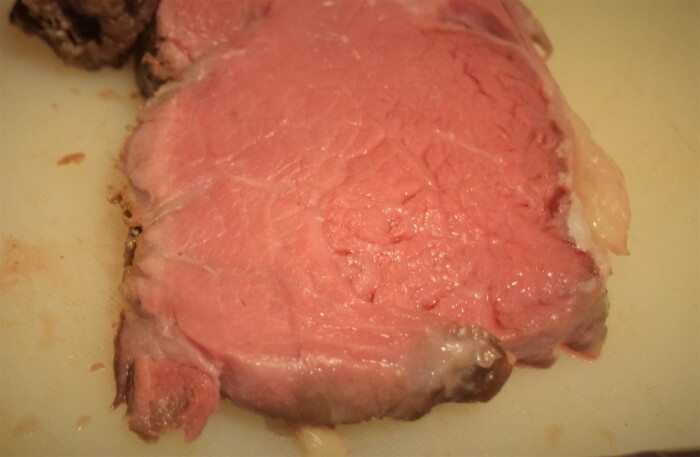
- Just a raw pic from the Nikon d3300, no mod on the color.
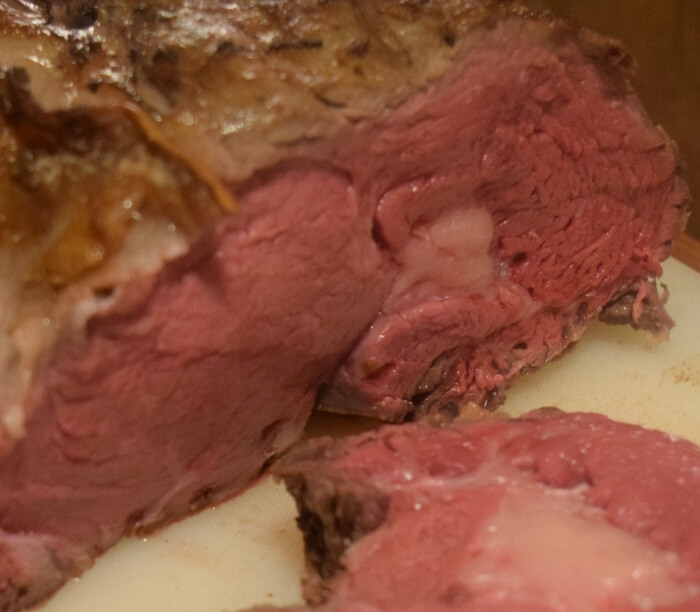
- Real, Berber.
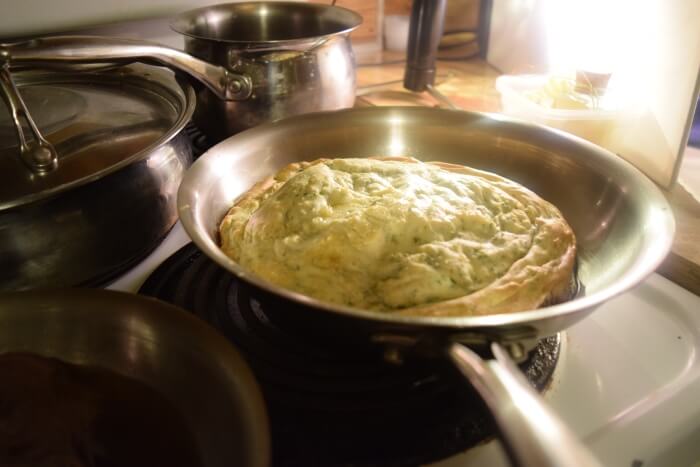
- Parsleyed Yorkshire Pudding cooked in suet, just for sport.
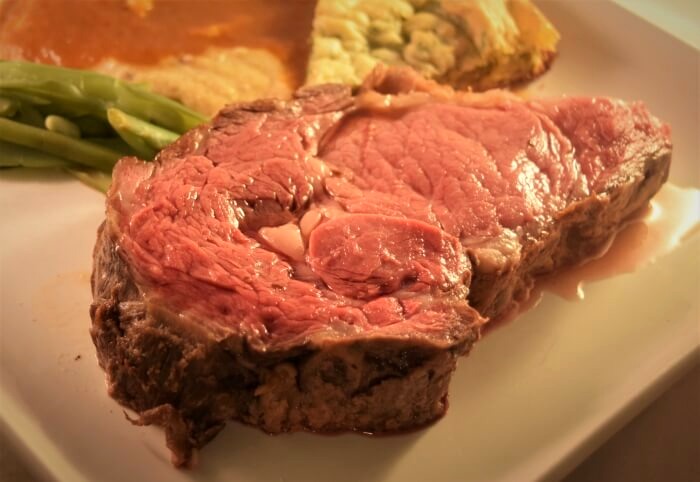
-
What’s Not to Love?
- I try not to get too fussy about presentation. Well, it doesn’t matter if I get fussy or not, I have a zillion colleagues with a lot more artistic talent and skill than I have. These guys, they toss food into the air and it lands in the perfect spot, and they’re done with it. Tweezers? They don’ nee’ no stinkin’ tweezers.
- Me, I try to show a clean plate that isn’t too crowded, and that can be hard enough. But presentation matters a lot, in that it affects the way that the diner experiences his/her meal. That first bite is the litmus test. If the first morsel of a steak is tough, or fatty, it doesn’t matter one bit what cut it is, or what the rest of the steak is like. At that moment, the diner gets an impression that will linger throughout this course, and even subsequent ones.
- Those of you who know me have heard me talk about the 7 o’clock rule. If you imagine the plate as a clock, MOST diners will take fork in left hand, knife in right, and attack that 7 o’clock position. Assuming the server has at least the bare modicum of training, that spot will be occupied by the entrée, and not the baked potato or, heaven forbid, a crab apple on a leaf of kale.
- When you look at the cut of Prime Rib shown above, because of the camera angle, you are looking directly at the 7 o’clock position. And take it from me, that little nugget of meat that you see there is just about the most succulent, unctuous, tender bite on the entire steer, called the spinus dorsalis.
- You heard it from me.
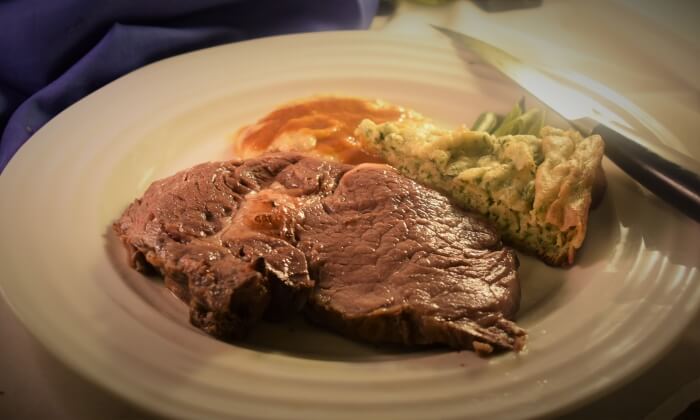
- Neither is there any shame in well done.
- 95% per cent of the world’s population eats their meat well done, if they are lucky enough to have any at all.
- People like to “other” each other, by arbitrary standards–skin color, faith, political beliefs, eye color, language, height, age, I’m so sick of it I could spit.
- Are we really gonna look down on people who just don’t want Myoglobin in their meat?
- I scorched a little with the torch, and dipped in the hot au Jus. DO NOT BOIL.
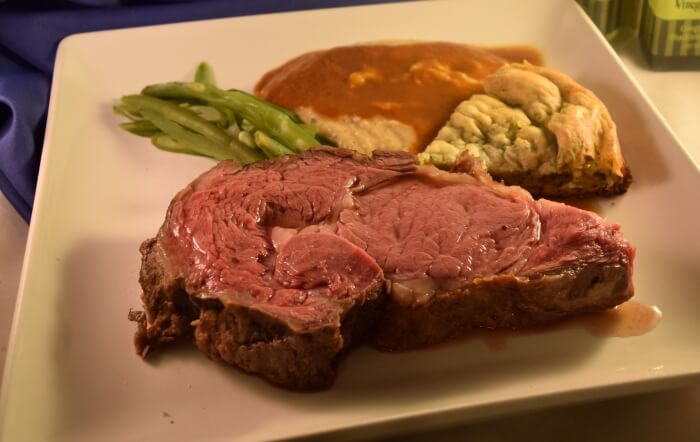
- But, sure, that’s the way I like it.
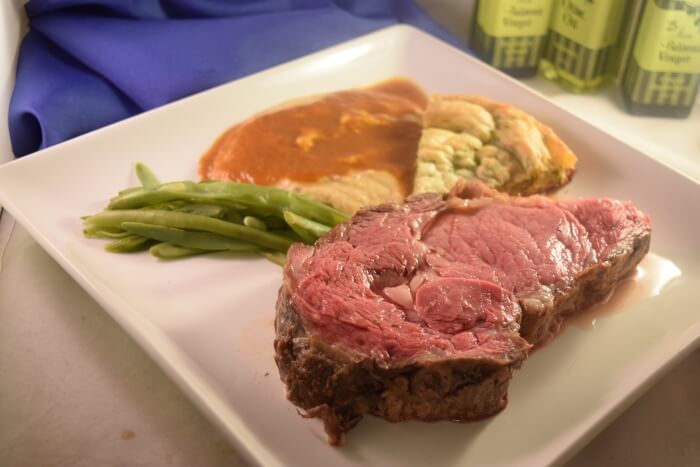
Sobbing, ever so softly. It’s like a dream.
Day After Addendum: Don’t call them leftovers…
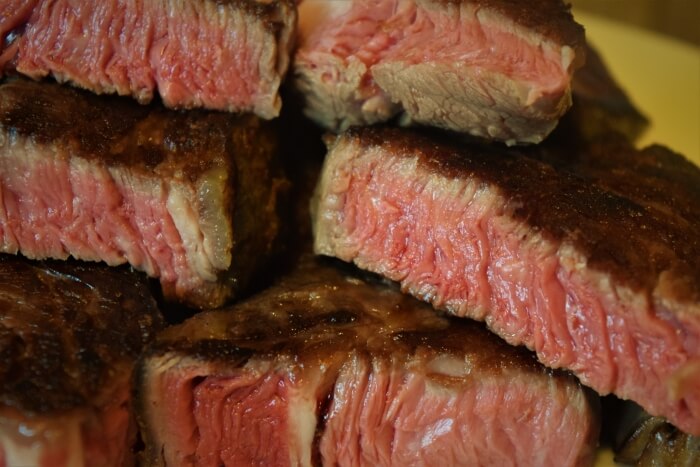
- No special treatment, just refrigerated after we finished dinner.
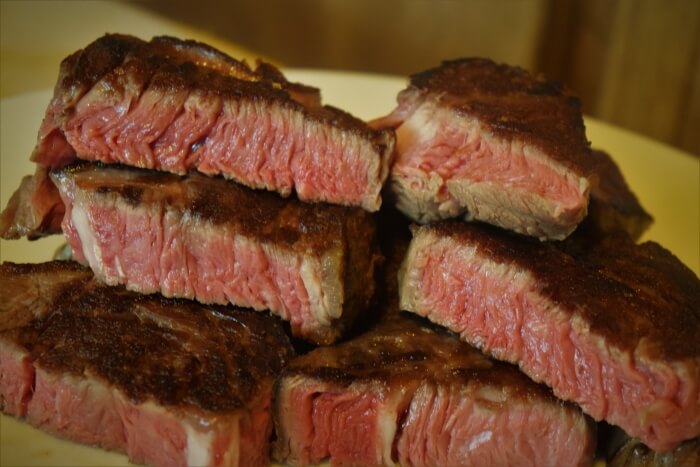
- Pan Seared @350 in Stainless Steel until mouth hot–the key to the most desirable result is to resist the urge to flip, until you “almost” see moisture on the top side.
- Then flip, turn off pan, wait a few seconds, and don’t look back.
- I just opened the vault.


